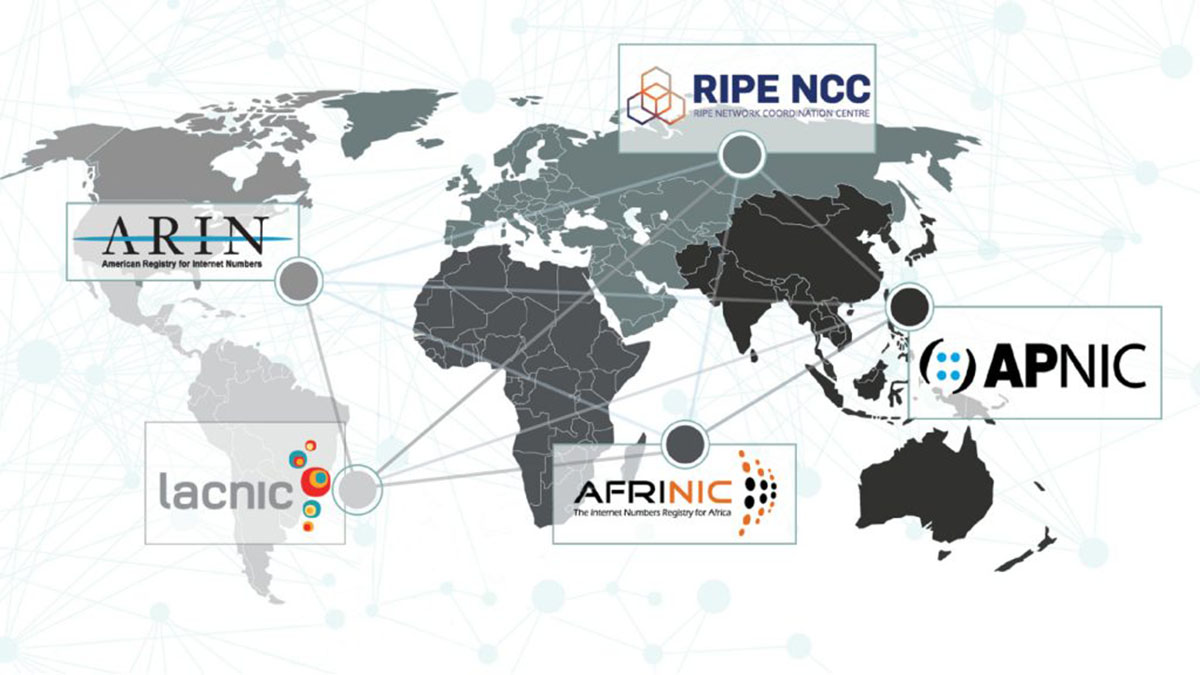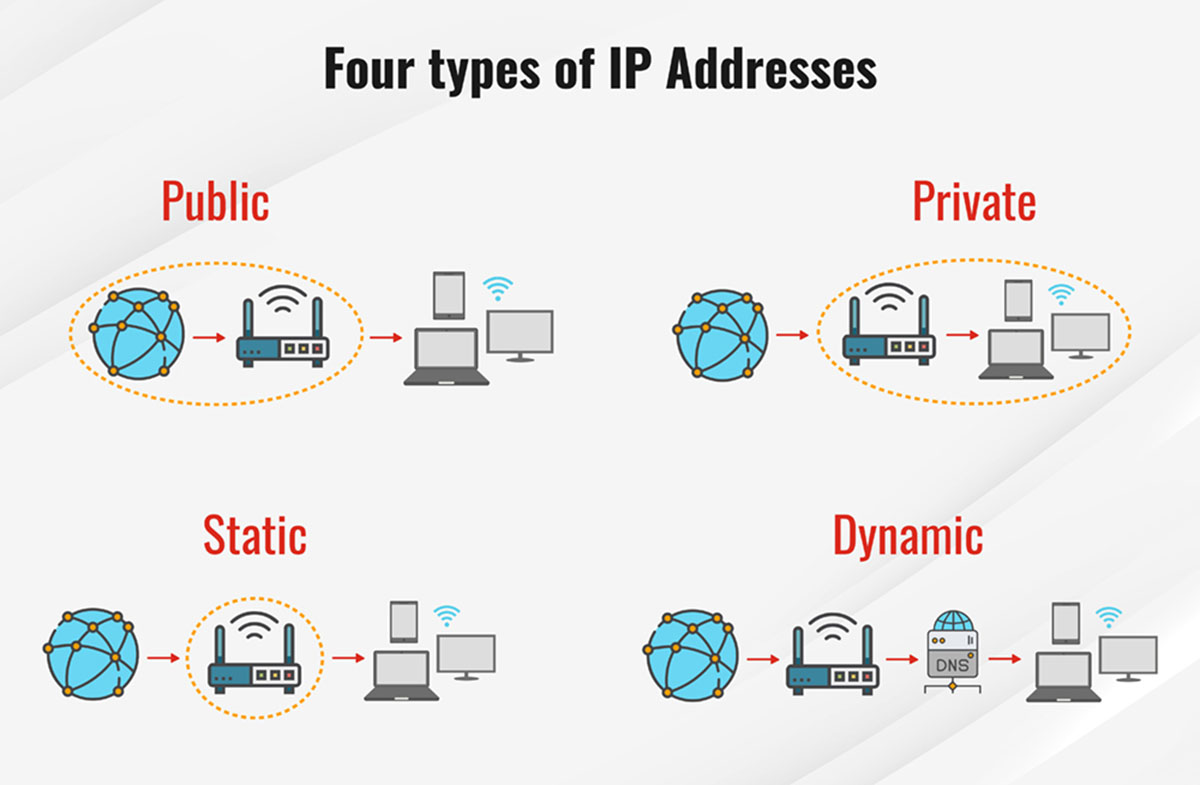Introduction
In today’s digital age, the Internet has become an integral part of our daily lives. We use it to connect with friends and family, conduct business, and access a wealth of information. Behind the scenes, a complex system of IP addresses ensures that our online activities are seamlessly connected. But who is responsible for allocating these public IP addresses?
In this article, we will explore the organizations involved in the allocation of public IP addresses and understand their roles in maintaining a stable and functioning internet infrastructure.
The Internet operates on the Internet Protocol (IP), a set of rules that governs how data is transmitted over networks. Every device connected to the internet is assigned a unique IP address, which acts as its digital identifier. This address allows devices to send and receive data packets, enabling communication between computers and servers across the globe.
As the number of internet-connected devices continues to grow exponentially, it is essential to have a structured system for allocating IP addresses. This ensures that each device has a unique address and can communicate efficiently.
Over the years, several organizations have assumed responsibility for allocating IP addresses. These organizations work collaboratively to ensure that IP address allocation is efficient, fair, and sustainable.
Now that we have introduced the topic of IP address allocation, let us delve into the history of IP addresses and understand how the allocation process has evolved over time.
History of IP addresses
The concept of IP addresses dates back to the early days of computer networking in the 1970s. The Internet Protocol version 4 (IPv4) was the first widely adopted protocol for assigning addresses. IPv4 addresses consist of a series of four numbers separated by periods, with each number ranging from 0 to 255. These addresses, commonly represented in the form of “XXX.XXX.XXX.XXX,” provided a total of approximately 4.3 billion unique addresses.
As the internet grew in popularity and the number of connected devices surged, it became evident that the supply of available IPv4 addresses would eventually deplete. To address this issue, the Internet Engineering Task Force (IETF) developed a new protocol called Internet Protocol version 6 (IPv6).
IPv6 addresses are significantly longer, consisting of eight groups of four hexadecimal digits separated by colons, such as “2001:0db8:85a3:0000:0000:8a2e:0370:7334”. The adoption of IPv6 expanded the pool of available IP addresses to a mind-boggling 340 undecillion (3.4 x 10^38) – a number large enough to assign unique addresses to every atom on Earth and then some.
With the growing importance of IP addresses, the organizations responsible for allocation and management evolved accordingly. In the early days, the assignment of IP addresses was centralized under a single entity known as the Internet Assigned Numbers Authority (IANA).
However, as the internet expanded globally, the task of IP address allocation became increasingly decentralized. To ensure efficient allocation across different regions, the concept of Regional Internet Registries (RIRs) was introduced. These organizations, spread across different continents, were given the responsibility of managing and distributing IP addresses within their specific regions.
Today, five RIRs operate worldwide: the American Registry for Internet Numbers (ARIN) for North America, the Réseaux IP Européens Network Coordination Centre (RIPE NCC) for Europe, the Middle East, and Central Asia, the Asia-Pacific Network Information Centre (APNIC) for the Asia-Pacific region, the Latin American and Caribbean Internet Addresses Registry (LACNIC) for Latin America and the Caribbean, and the African Network Information Centre (AFRINIC) for Africa.
Each RIR maintains its own set of policies governing IP address allocation, ensuring that addresses are distributed fairly and efficiently within their respective regions. However, as the demand for IP addresses continues to rise, the allocation process faces various challenges.
In the next section, we will explore the organizations involved in IP address allocation and understand their roles in maintaining a robust and functional internet infrastructure.
What is a public IP address?
A public IP address is a unique identifier assigned to a device that is connected to the internet. It serves as a means of distinguishing one device from another on the global network. Unlike private IP addresses, which are used within local networks to identify devices and facilitate communication, public IP addresses enable devices to communicate with other devices across the internet.
Public IP addresses play a crucial role in enabling online services and applications to function. When you access a website, send an email, stream a video, or make a VoIP call, your device uses its public IP address to establish a connection with the server hosting the respective service.
Public IP addresses are assigned by internet service providers (ISPs) or other organizations responsible for IP address allocation. These addresses are globally unique, ensuring that no two devices have the same public IP address at any given time. This uniqueness allows data packets to be routed accurately across the internet, ensuring successful communication between devices located in different parts of the world.
To better understand the concept of public IP addresses, let’s consider an analogy. Think of your device’s public IP address as the equivalent of a street address for a physical location. Just as a street address helps mail carriers deliver letters to the correct location, a public IP address helps internet traffic reach the appropriate device.
Public IP addresses are essential for various internet-based activities, including online gaming, video conferencing, e-commerce, and remote access. Without a public IP address, these services would be impossible to access and utilize.
It’s important to note that the availability of public IP addresses is not unlimited. With the exponential growth of internet-connected devices, the supply of IPv4 addresses has become increasingly scarce. This scarcity has led to the adoption of IPv6, which provides an exponentially larger pool of IP addresses. However, the transition from IPv4 to IPv6 is still in progress, and both protocols coexist in the current internet infrastructure.
In the next section, we will explore the organizations responsible for allocating public IP addresses and understand how the allocation process works.
Role of the Internet Assigned Numbers Authority (IANA)
The Internet Assigned Numbers Authority (IANA) plays a vital role in the allocation and management of public IP addresses. Established in the early days of the internet, IANA initially held the responsibility for coordinating various technical aspects of the internet, including IP address assignment.
IANA operates under the administration of the Internet Corporation for Assigned Names and Numbers (ICANN), a non-profit organization responsible for the coordination and stability of internet resources.
In the early stages, IANA was the central authority responsible for allocating IP addresses globally. However, as the internet grew and the demand for IP addresses increased, the allocation process underwent significant changes to enable efficient distribution across different regions.
Currently, IANA’s role in IP address allocation is focused on the distribution of address space to the Regional Internet Registries (RIRs). The RIRs then further distribute the allocated address blocks to Internet Service Providers (ISPs) and other entities within their respective regions.
Aside from IP address allocation, IANA is also responsible for managing other critical internet resources, such as domain names, autonomous system numbers (ASNs), and protocol parameters. This multi-faceted role allows IANA to maintain the stability and smooth operation of the global internet infrastructure.
One of the key functions performed by IANA is the allocation of the IP address blocks reserved for certain purposes. These include addresses used for private networks, multicast addresses, and loopback addresses. By reserving these address ranges, IANA ensures that they are not used as public IP addresses, thus preventing any conflicts.
IANA also manages the allocation of special-purpose IP addresses, such as IPv6 transition mechanisms and anycast addresses. These special-purpose addresses are intended for specific technical requirements and are allocated under the guidance of industry standards bodies.
In summary, the Internet Assigned Numbers Authority (IANA) plays a critical role in the allocation and management of public IP addresses. While its direct involvement in IP address allocation has become more limited due to the decentralized nature of the process, IANA continues to ensure the stability and proper distribution of IP address space to the Regional Internet Registries (RIRs).
Role of Regional Internet Registries (RIRs)
The Regional Internet Registries (RIRs) play a crucial role in the allocation and management of public IP addresses within their respective regions. As the internet grew and expanded globally, it became evident that a decentralized approach to IP address allocation was necessary to ensure efficient distribution and management.
There are currently five RIRs operating worldwide: the American Registry for Internet Numbers (ARIN) for North America, the Réseaux IP Européens Network Coordination Centre (RIPE NCC) for Europe, the Middle East, and Central Asia, the Asia-Pacific Network Information Centre (APNIC) for the Asia-Pacific region, the Latin American and Caribbean Internet Addresses Registry (LACNIC) for Latin America and the Caribbean, and the African Network Information Centre (AFRINIC) for Africa.
Each RIR is responsible for managing and distributing IP addresses within their designated region. Their primary role is to ensure fair and efficient utilization of IP address space, considering factors such as the size of the population, the number of internet service providers, and the overall regional demand for IP addresses.
RIRs establish policies and guidelines for IP address allocation, basing their decisions on the principles of fairness, neutrality, and sustainability. These policies ensure that addresses are allocated in a transparent manner, taking into account the specific needs and requirements of the organizations and individuals within their respective regions.
One of the key responsibilities of RIRs is the evaluation of IP address allocation requests. Internet Service Providers (ISPs), enterprises, government agencies, educational institutions, and other organizations within their regions submit requests for additional IP address space to meet their growing needs. RIRs review these requests based on their established policies to ensure that the resources are allocated to those who genuinely need them and can demonstrate efficient utilization.
In addition to IP address allocation, RIRs also play a vital role in managing the distribution of Autonomous System Numbers (ASNs), which are unique identifiers used in BGP routing to establish autonomous networks on the internet.
The coordination and cooperation among RIRs are essential to ensure efficient use of the global IP address space. They regularly collaborate and share information to address issues such as address exhaustion, IPv6 adoption, and policy development.
Overall, RIRs play a critical role in the allocation and management of public IP addresses within their respective regions. By adhering to fair and transparent policies, they contribute to the stability and sustainable growth of the internet infrastructure in their areas of responsibility.
Role of National Internet Registries (NIRs)
National Internet Registries (NIRs) serve as intermediaries between Regional Internet Registries (RIRs) and local organizations within a specific country or territory. While RIRs handle IP address allocation on a regional scale, NIRs focus on the management and distribution of IP addresses at a national level.
NIRs serve as a point of contact for local Internet Service Providers (ISPs), enterprises, and other organizations in their respective countries or territories. They assist these entities in obtaining IP address space and provide guidance on IP address management best practices.
The role of NIRs varies from country to country, depending on local needs and regulatory frameworks. Some NIRs operate as separate entities, while others are integrated into national telecommunication regulatory bodies or government agencies responsible for internet infrastructure.
NIRs work closely with their respective RIRs to ensure coordination and alignment in IP address allocation practices. They interact with RIRs to relay information about IP address requirements and help in the efficient distribution of address space.
In addition to IP address allocation, NIRs typically handle other functions related to internet governance at a national level. These may include managing the registration of domain names, administering local internet exchange points (IXPs), and promoting the adoption of IPv6 in their respective countries.
One of the primary responsibilities of NIRs is to evaluate IP address allocation requests from local entities. They follow the policies and guidelines set by the RIRs, ensuring a consistent and coordinated approach to IP address management.
NIRs also play a significant role in preserving and monitoring the efficient use of IP address resources within their countries. They work to prevent address space fragmentation and encourage organizations to regularly review and update their IP address assignments to avoid wastage.
Another crucial aspect of NIRs’ role is fostering awareness and education about IP address management practices. They provide resources, training, and support to local organizations, helping them understand the importance of proper IP address utilization and promote the adoption of best practices.
In summary, NIRs serve as the interface between RIRs and local entities within a specific country or territory. Their role involves facilitating IP address allocation, promoting efficient utilization, and providing guidance and support to local organizations. The collaboration between NIRs and RIRs ensures a coordinated and effective approach to IP address management at both the regional and national levels.
Role of Internet Service Providers (ISPs)
Internet Service Providers (ISPs) are essential players in the allocation and management of public IP addresses. They serve as the link between end-users and the wider internet, providing connectivity and access to online services.
ISPs play a crucial role in obtaining and distributing IP addresses to their customers. They acquire blocks of IP addresses from Regional Internet Registries (RIRs) or National Internet Registries (NIRs) and assign them to the devices connected to their networks.
When an individual or organization signs up for internet service with an ISP, they are assigned a public IP address that allows them to connect to the internet and establish communication with other devices and servers across the globe.
ISPs are responsible for efficiently managing their allocated IP address blocks. They must ensure that address space is utilized effectively and avoid any wastage or overlapping assignments. This involves monitoring IP address usage, regularly updating address assignments, and implementing measures to conserve address space when possible.
As the demand for IP addresses continues to grow, ISPs play a vital role in promoting the adoption of Internet Protocol version 6 (IPv6). IPv6 provides a significantly larger pool of IP addresses, enabling the continued expansion of internet-connected devices. ISPs are instrumental in helping their customers transition from the older IPv4 to the newer IPv6 protocol, ensuring a smooth and efficient network environment.
ISPs also fulfill the role of managing network infrastructure and ensuring the reliable operation of their networks. They invest in the necessary equipment, such as routers and switches, to deliver internet connectivity to their customers. ISPs are responsible for monitoring network performance, addressing any issues or outages promptly, and maintaining high-quality service to their subscribers.
Furthermore, ISPs play a pivotal role in enforcing internet security measures. They implement firewalls, intrusion detection systems, and other security mechanisms to protect their networks and subscribers from potential threats. ISPs also work closely with law enforcement agencies and other organizations to combat cybercrime and ensure a safe online environment for their customers.
In addition to IP address allocation and network management, ISPs often offer additional services such as email hosting, domain registration, virtual private networks (VPNs), and cloud computing solutions. These services further enhance the internet experience for users and contribute to the growth and development of the online ecosystem.
Overall, ISPs are a crucial link between end-users and the global internet infrastructure. Their role in IP address allocation, network management, security, and service provision is essential for ensuring reliable connectivity and the seamless operation of online services.
How IP addresses are allocated
The allocation of IP addresses involves a structured process that ensures fair and efficient distribution of address space. The process is governed by established policies and guidelines set by the Internet Assigned Numbers Authority (IANA), Regional Internet Registries (RIRs), and National Internet Registries (NIRs).
When a new block of IP addresses becomes available, IANA allocates a portion of that block to the respective RIRs. The RIRs then further distribute the allocated address space to ISPs, enterprises, government agencies, educational institutions, and other organizations within their designated regions.
The allocation process takes into account several factors, including the size of the population, the number of internet service providers, and the overall demand for IP addresses within a given region. Requesting organizations are required to demonstrate their need for IP addresses and their ability to effectively utilize the allocated resources.
Typically, requests for IP address allocations are submitted by organizations to their respective local NIRs or directly to the RIRs in regions without NIRs. These requests include information about the applicant’s network infrastructure, the number of devices requiring IP addresses, and the projected growth of their network.
The NIRs or RIRs review and evaluate the requests based on established policies and guidelines. They consider factors such as the efficient utilization of IP address space, avoidance of address wastage, and adherence to best practices in IP address management.
Upon approval, the NIRs or RIRs assign an appropriate block of IP addresses to the requesting organization. The size of the assigned block depends on the organization’s needs and the availability of address space within the allocated pool.
Organizations receiving IP address allocations from NIRs or RIRs are responsible for managing and distributing those addresses within their own networks. They assign individual IP addresses to their devices and maintain records of address assignments to ensure efficient usage and avoid conflicts.
ISPs, as intermediaries between end-users and the internet infrastructure, play a significant role in IP address allocation at a local level. When customers sign up for internet service, ISPs assign them a public IP address from their allocated pool. ISPs must manage their address space effectively to meet the needs of their customer base and expand their network infrastructure when necessary.
The transition from IPv4 to IPv6 is an ongoing process in order to accommodate the growing number of internet-connected devices. The allocation process for IPv6 addresses is similar to that of IPv4, with the goal of ensuring widespread adoption and the availability of a vast pool of unique IP addresses.
Overall, the allocation of IP addresses follows a systematic process that involves the collaboration between IANA, RIRs, NIRs, and ISPs. By adhering to established policies and guidelines, the allocation process ensures equitable distribution of IP address resources and promotes the efficient utilization of address space.
Challenges in IP address allocation
As the demand for internet-connected devices continues to rise, the allocation of IP addresses faces various challenges. These challenges stem from the limited supply of IPv4 addresses, the transition to IPv6, evolving technologies, and the need for fair and efficient allocation practices.
One of the primary challenges is the depletion of available IPv4 addresses. The exponential growth of the internet has led to a scarcity of IPv4 addresses, as the total number of unique addresses is limited. This scarcity has necessitated the adoption of IPv6, which provides a significantly larger pool of IP addresses. However, the transition from IPv4 to IPv6 poses its own set of challenges, including the need to update network infrastructure, support both protocols simultaneously, and ensure compatibility across different devices and systems.
Another challenge in IP address allocation is the uneven distribution of addresses across regions. Some regions have a higher demand for IP addresses due to higher population densities or greater internet penetration. This can result in disparities between regions in terms of available address space. Regional Internet Registries (RIRs) work to address these imbalances through policies and guidelines that ensure fair distribution, but achieving complete equality remains a challenge.
The efficient utilization of IP address space is also a challenge. Many organizations, especially those with legacy IPv4 addresses, may have blocks of addresses that are underutilized or assigned to inactive devices. This inefficiency contributes to the depletion of IPv4 address space and poses a barrier to the allocation of addresses to organizations that genuinely need them. Encouraging organizations to review and optimize their IP address assignments is essential for efficient utilization and conserving address resources.
In addition, the allocation and management of IP addresses must consider emerging technologies. With the advent of the Internet of Things (IoT), where countless devices require connectivity, there is a need to accommodate the increasing number of IP addresses required. Ensuring that IoT devices are accounted for in IP address allocation policies and implementing measures to support their connectivity pose ongoing challenges.
The coordination and collaboration between various stakeholders in IP address allocation also present challenges. Coordinating policies and practices across different RIRs and NIRs can be complex, requiring ongoing communication, policy harmonization, and addressing regional differences. Additionally, the transparent and efficient communication between Internet Service Providers (ISPs) and RIRs/NIRs is crucial to ensure accurate address assignment, avoid address conflicts, and maintain the integrity of the IP address allocation system.
Addressing these challenges requires ongoing efforts and collaboration among organizations involved in IP address allocation. Continued promotion of IPv6 adoption, implementation of efficient utilization practices, addressing regional disparities, and aligning policies and technologies are key to overcoming these challenges and ensuring the sustainable and effective allocation of IP addresses for the future.
Conclusion
In conclusion, the allocation of public IP addresses is a complex process that involves multiple organizations and stakeholders working together to ensure the efficient and fair distribution of address space. The Internet Assigned Numbers Authority (IANA) plays a central role in coordinating IP address allocation globally, while Regional Internet Registries (RIRs) and National Internet Registries (NIRs) handle allocation at regional and national levels, respectively. Internet Service Providers (ISPs) serve as intermediaries, assigning IP addresses to end-users and managing network infrastructure.
The history of IP addresses has witnessed the evolution from IPv4 to the adoption of IPv6, providing a larger pool of addresses to accommodate the growing number of internet-connected devices. However, challenges such as the depletion of IPv4 addresses, the transition to IPv6, uneven distribution of addresses, efficient utilization, technological advancements, and coordination between stakeholders persist.
Efforts are being made to address these challenges. The adoption of IPv6 is ongoing, aiming to provide a sufficient and ever-expanding supply of addresses. Organizations are encouraged to optimize their IP address usage, ensuring efficient utilization and conserving address resources. Policies and guidelines are continuously reviewed and updated to promote fair allocation practices and address regional disparities.
As the internet continues to evolve and expand, the role of IP address allocation remains vital for the stability and functionality of the online ecosystem. The collaboration and cooperation among IANA, RIRs, NIRs, and ISPs are crucial in maintaining a robust and sustainable allocation process. By embracing emerging technologies, adapting to changing needs, and promoting efficient practices, the internet community can overcome the challenges and ensure the smooth allocation of IP addresses for the future.

























